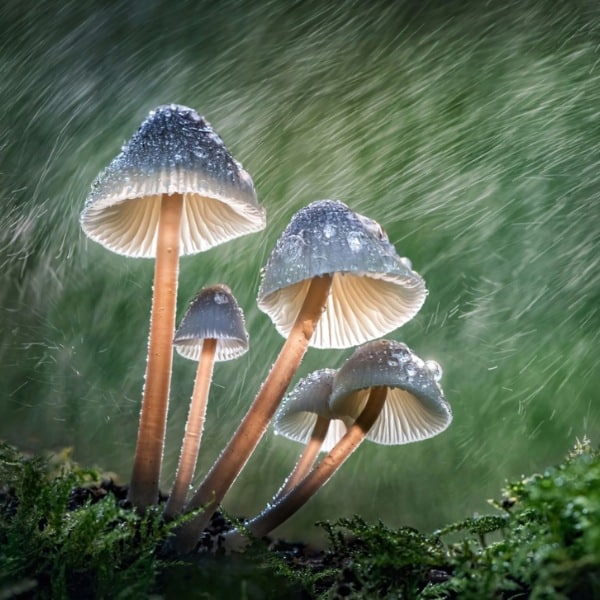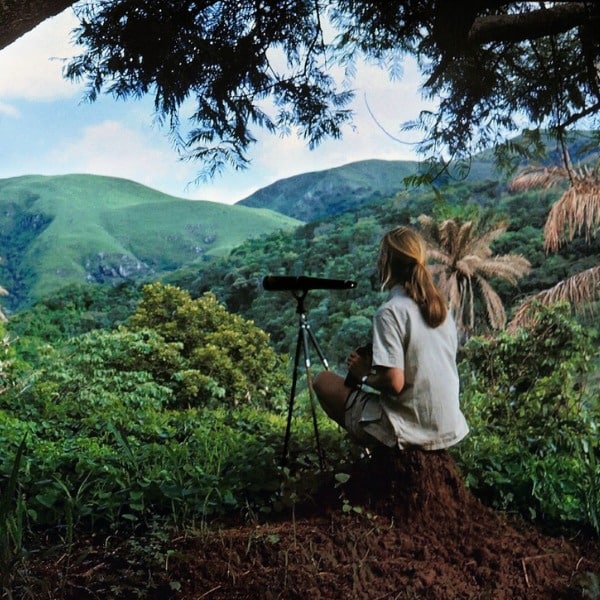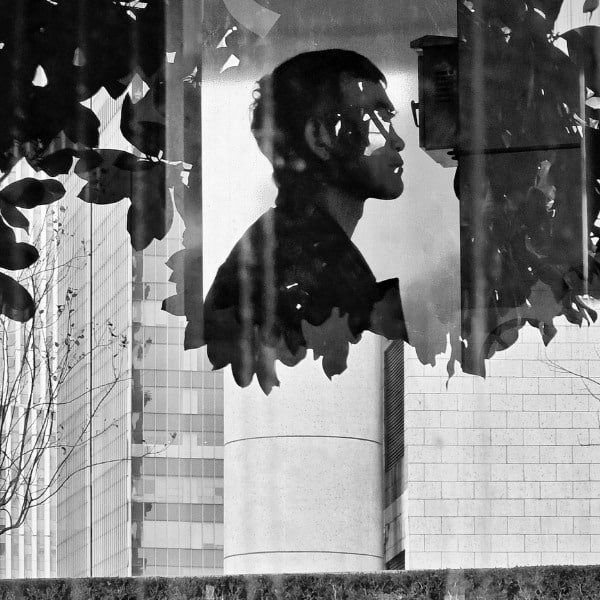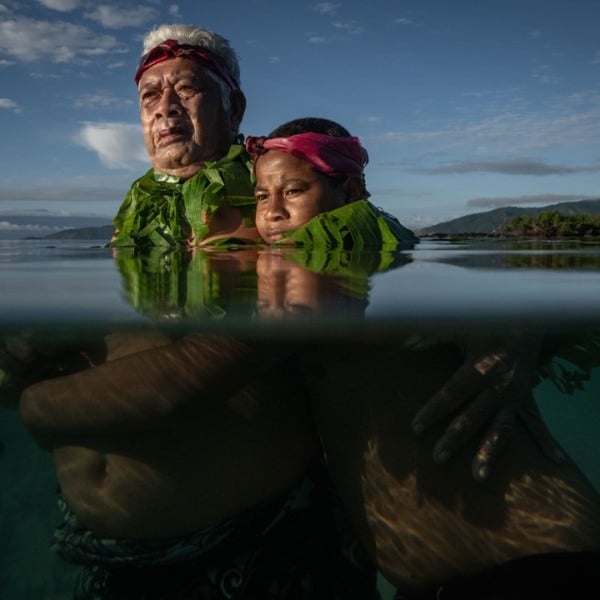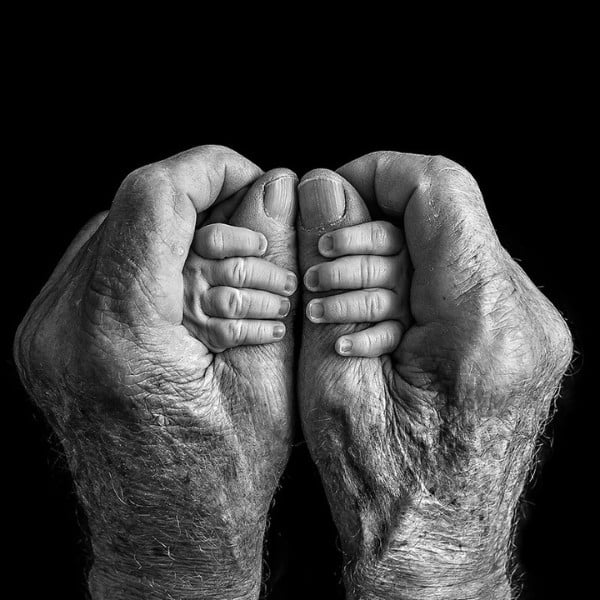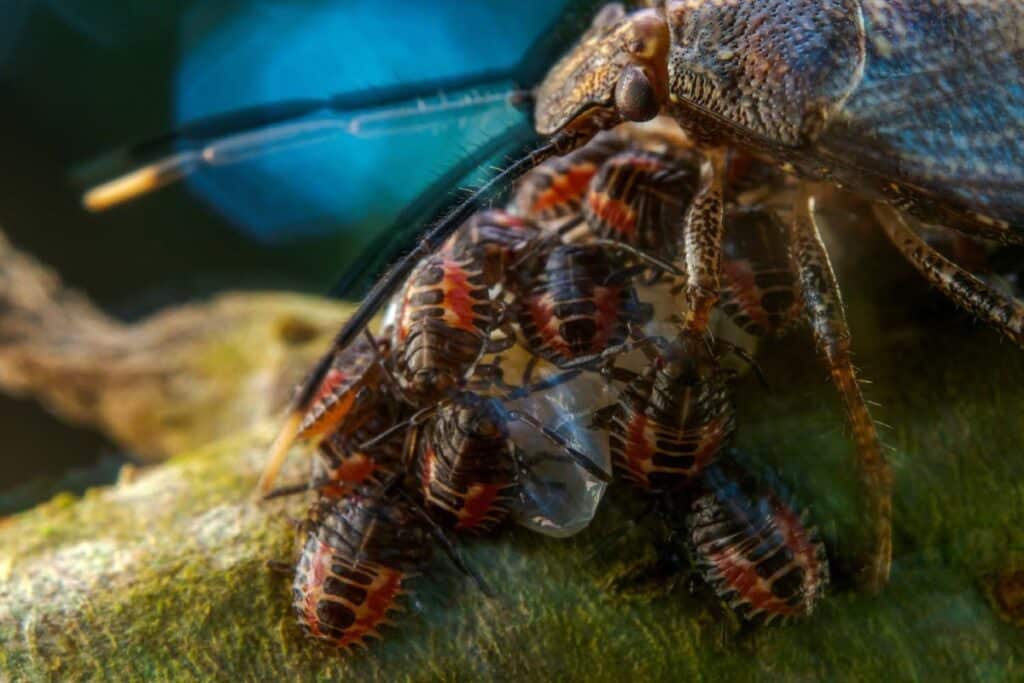
“Maternal care” by Javier Aznar González de Rueda (Spain). Overall Winner.
“In Ecuador's largest protected area, Yasuní National Park, I was able to observe maternal care behavior in the stink bug Antiteuchus tripterus over a two-week period. The female bug guarded its clutch of eggs on a small branch. This behavior has been reported for other true bug species. To my surprise, it turned out that the mother bug not only protected the eggs but also the newly hatched larvae up to their first molt. In Ecuador's rainforest, the stink bug's brood is vulnerable to attack by numerous predators and parasitoids such as ichneumon wasps. Maternal care significantly increases the offspring's chances of survival. The rainforest is a highly complex ecosystem with countless organisms in a vast interconnected web of life.”
Spanish nature photographer Javier Aznar González de Rueda impressed judges with his image of a female stink bug guarding her clutch of eggs in Ecuador's Yasuní National Park. For his efforts, he was named Photographer of the Year in the German Society for Nature Photography (GDT) European Wildlife Photographer of the Year competition.
In doing so, he beat out professional photographers from 42 countries, and his image of this insect topped the nearly 18,000 photographs entered into the contest. His photo highlights the complex ecosystem of the park and the interconnected nature of the species that live there, as the mother wards off potential predators and parasites.
“Do we humans really believe that insects bond with their offspring?” muses jury member Mark Littlejohn. “That they are capable of displaying parental feelings? And are humans capable of connecting emotionally with insects?
“From an early age, the fate of dolphins, elephants, and other large charismatic animals touches our hearts. Yet all life deserves to be cherished and protected. The beautiful photograph by Javier is about exactly this—unconditional love. In all its forms and manifestations. This aspect was crucial to the decision by the jury.”
This winning image is just one of many excellent photographs to earn a win in the competition. In addition to the overall winner, nine category winners, two special prizes, and two youth winners were also named. Highlights include Roberto Bueno‘s mysterious photo of lichen overtaking dinnerware in an abandoned farm in Portugal, which won the Plants and Fungi category, as well as Jens Cullmann‘s dynamic photo that won the Mammals category. In the image, he captures the frenetic energy of a lion as it attempts to take down a member of a buffalo herd.
A staple of the wildlife photography community since it began in 2001, the European Wildlife Photographer of the Year contest once again proves to be a valuable outlet for creativity. Scroll down to see more of this year's winners, and check out the full gallery online.
Here are some of our favorite winners from the 2023 European Wildlife Photographer of the Year contest.
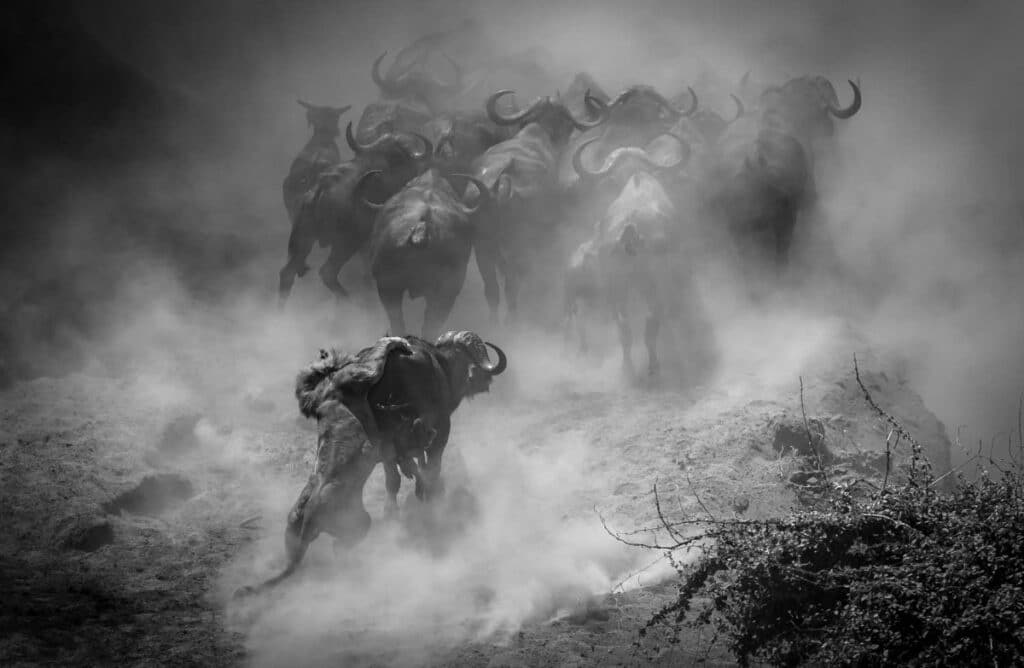
“Last dance?” by Jens Cullmann (Germany). Winner, Mammals.
“It was the height of the dry season in Mana Pools National Park, Zimbabwe. The days were hot and dusty, and water was a rare commodity in the southern part of the park. One of the last available watering spots was Chitake Springs. However, the springs are located in a gorge and are part of the territory of a large pride of lions specialized in preying upon buffalo herds that come to quench their thirst. In the dust kicked up as the buffaloes fled the gorge after drinking, the lion took its chance.”
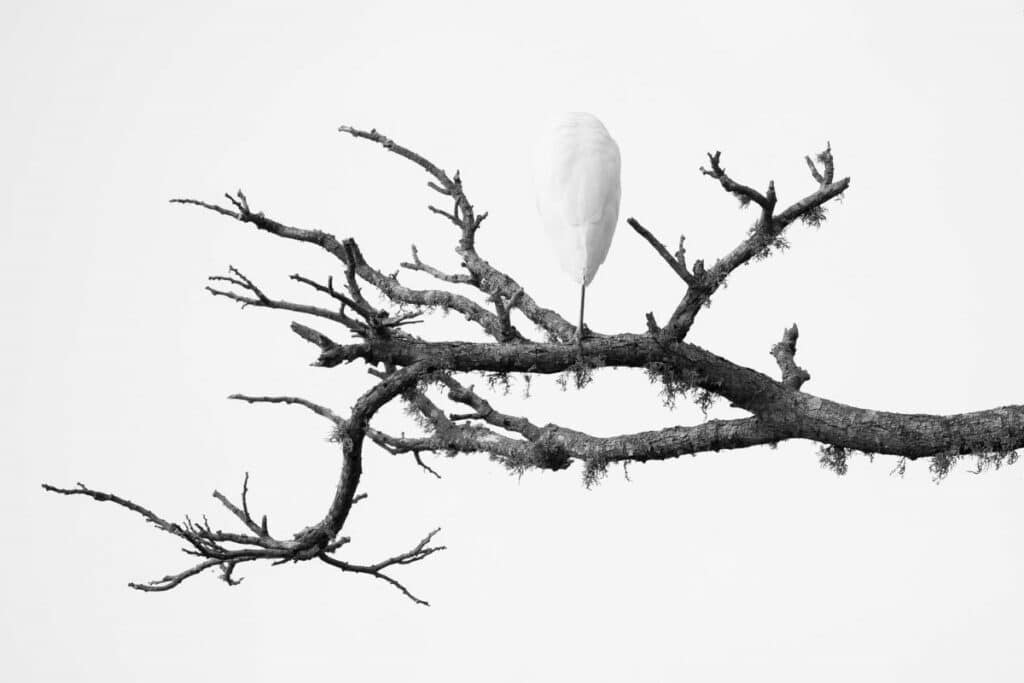
“Silence” by Jan Piecha (Germany). Runner-up, Birds.
“The small town Tissamaharama in the south-east of Sri Lanka is the starting point for safaris to the famous Yala National Park. While in town, I enjoyed strolling through the rice fields in the evenings and stopping in at a flying fox colony at the shore of Lake Tissa. My walk took me along a lakeside promenade with elegant and stately trees. In one of them, I discovered this sleeping intermediate egret (Ardea intermedia).”
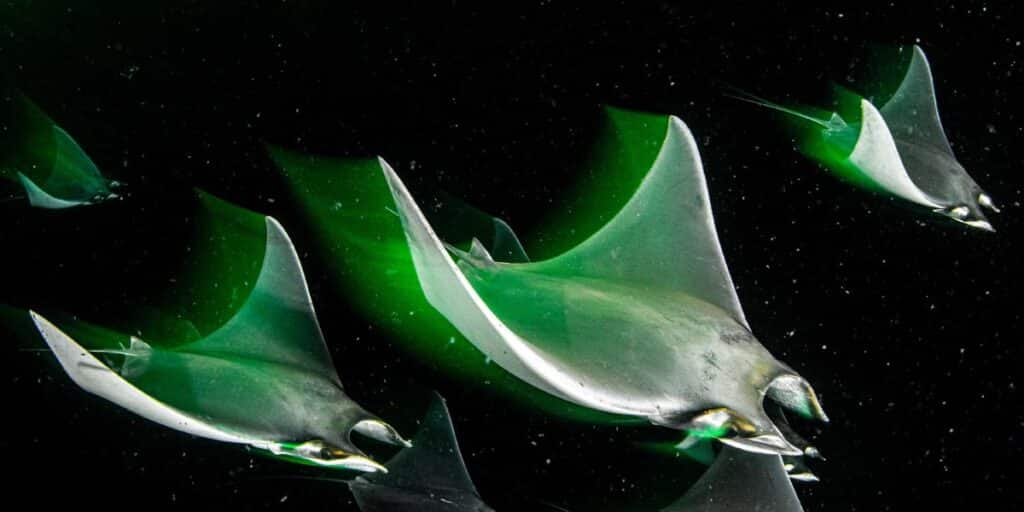
“Nighttime squadron” by Catherine Holmes (United Kingdom). Winner, Underwater World
“This image was captured in a quiet, shallow bay of Isla Espirito Santo (Mexico). The photograph shows a squadron of juvenile Munk's devil rays (Mobula munkiana) feeding on plankton attracted to a green light hanging off the stern of our boat in the dark of night. I used a slow shutter speed to capture the graceful, synchronized movements of the rays as they appeared to fly through the darkness.”
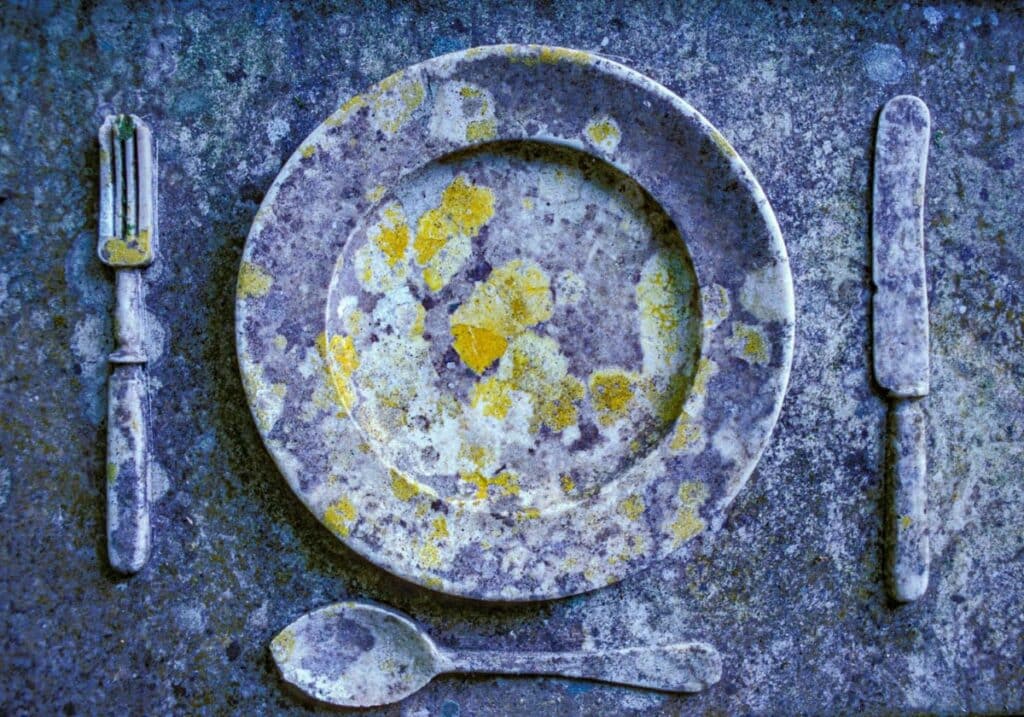
“Lichen dinner” by Roberto Bueno (Spain). Winner, Plants and Fungi.
“I found this unusual situation at an abandoned farm near Sintra, Portugal. A complete place setting had been left behind on a stone table. I was very surprised to see that the whole ensemble was covered in lichens. The table stood under a huge tree which most likely provided the shade and moisture needed for the lichens to grow over the course of decades.”
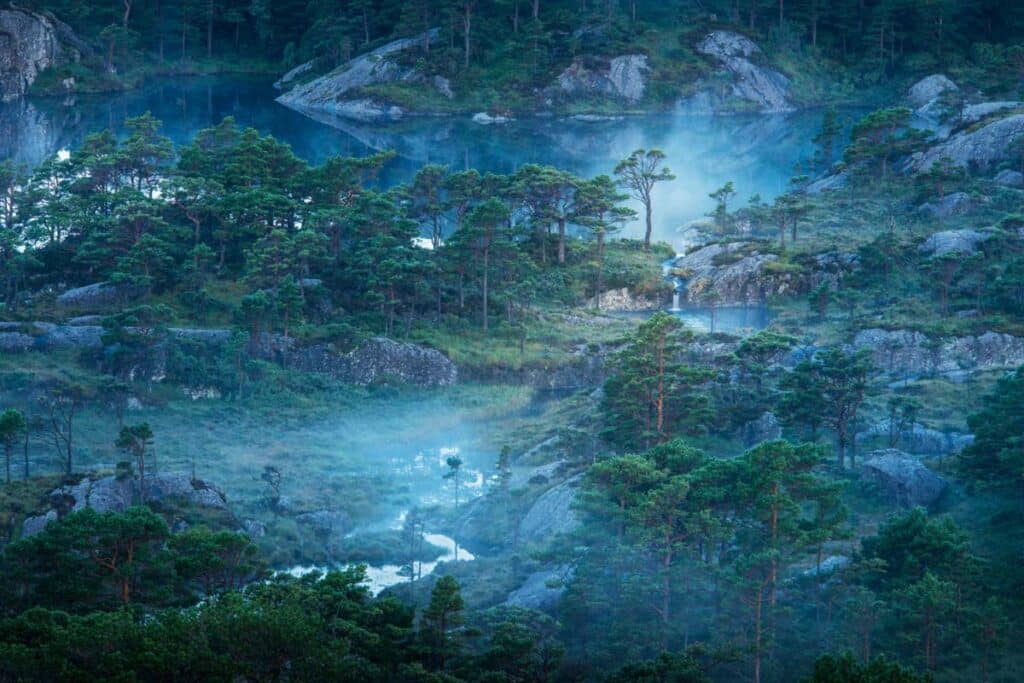
“Paradise” by Florian Smit (Germany). Runner-up, Landscapes.
“The photograph shows the fascinating landscape of an island in the west of Norway. The island is dotted with small lakes and many of its pines have a bonsai-like appearance. The scenery is reminiscent of a tropical landscape. The image was taken early in the morning before sunrise, while the fog was still wafting amongst the trees.”
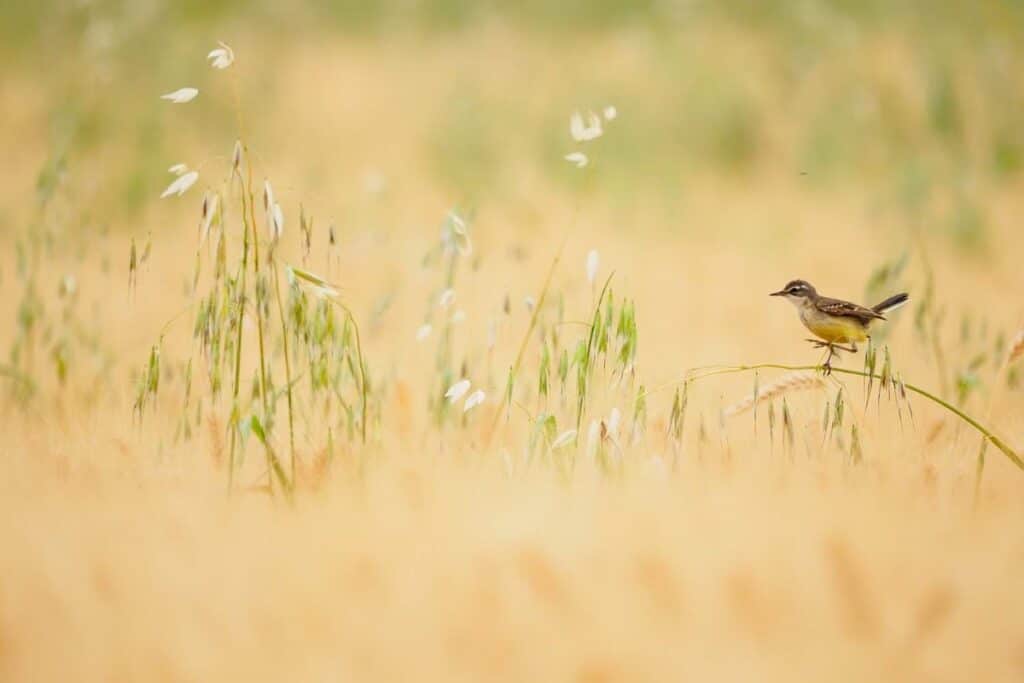
“Tightrope artist” by Alberto Román Gómez (Spain). Winner, Young Photographers | 14 years and under.
“One afternoon in spring, my father and I set out to photograph birds. We drove to an agricultural area with many bird species. We decided to park the car and walk along a path through the fields. Almost immediately, I spotted a western yellow wagtail (Motacilla flava) moving cautiously from one stalk to the next – sometimes almost losing its balance and looking more like a tightrope walker than a bird.”
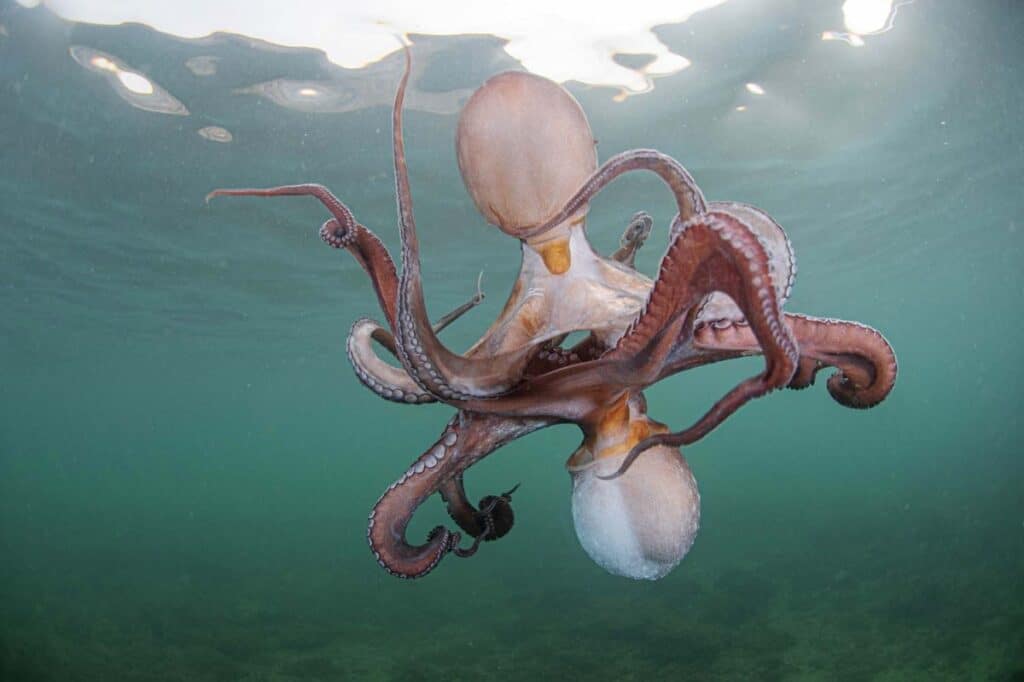
“Octopus tango” by Francisco Javier Murcia Requena (Spain). Underwater World, Highly commended
“This photograph was taken in the early morning hours during a dive along the Mediterranean coast of south-east Spain. Already from a distance, I could see two common octopuses (Octopus vulgaris) intertwining their arms and moving continuously—a very unusual behavior. Perhaps a mating ritual or maybe a form of territorial defense requiring the animals to compare tentacle lengths?”
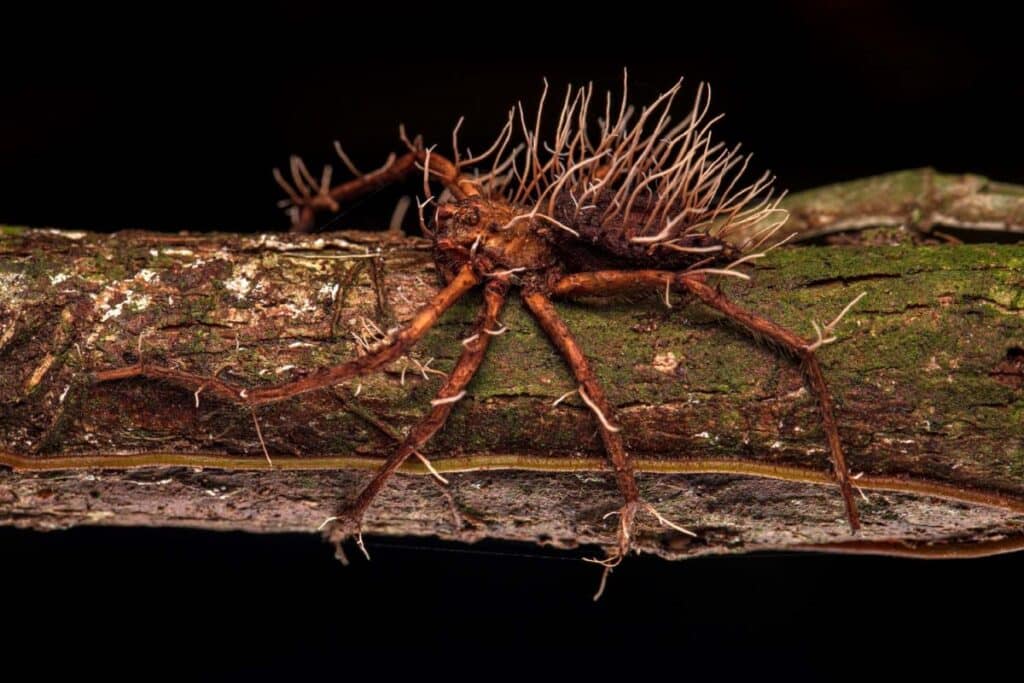
“Defeated” by Roberto Garcia Roa (Spain). Runner-up, Plants and Fungi.
“In August 2021, I found this spider near a small river in the Peruvian Tambopata rainforest. It was infested with a parasitic Ophiocordyceps fungus. This so-called “zombie fungus” infects arthropods by penetrating their exoskeleton. The fungus is able to control the behavior of its host. In this case, the spider was “compelled” to seek a location favorable for the growth of the fungus. After killing the host, the fungus fully metabolizes the inner organs of the spider and produces fruiting bodies that release spores to infect new victims.”
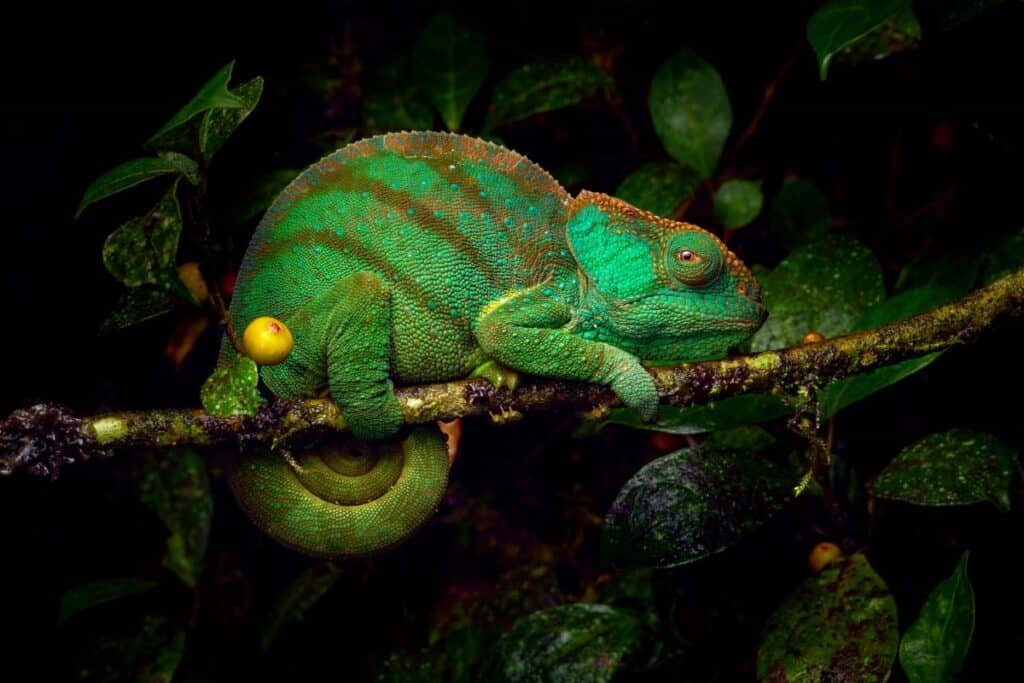
“Brookesia superciliaris” by Petr Bambousek (Czech Republic). Highly commended, Other Animals.
“Brookesia, also called leaf chameleons, are a group of Old World lizards endemic to Madagascar and are considered to be the world's smallest chameleons (< 10 cm long). They are terrestrial and forage among fallen leaves. The ability to change their skin coloration to match the environment and the tendency to stay still under threat make leaf chameleons almost invisible to their predators. In this photo taken from a distance, I have tried to depict Brookesia superciliaris in its typical habitat.”
Nearly 18,000 photographs were entered into the contest, which is run by the German Society for Nature Photography.
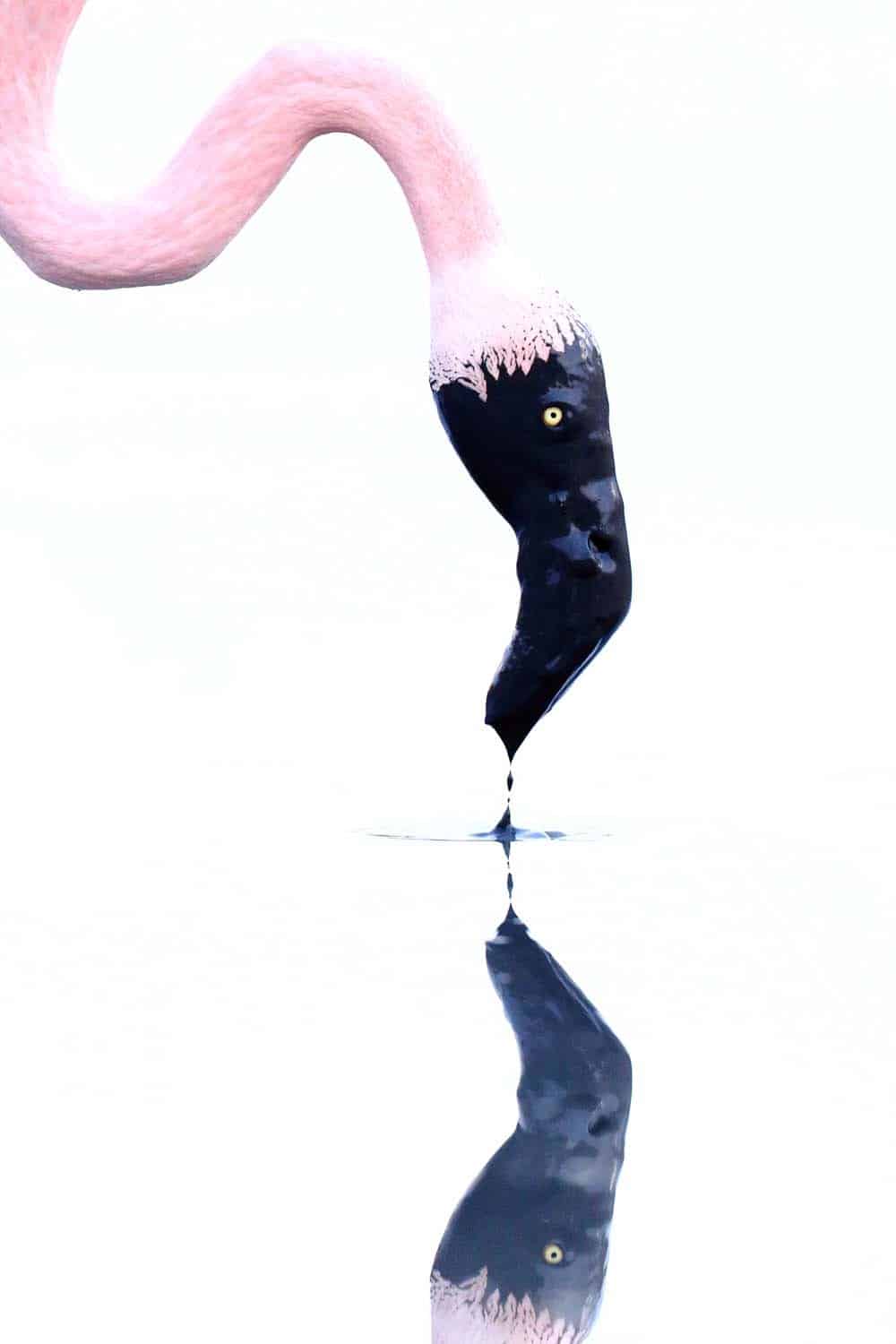
“Pen and inkwell” by Jonathan Lhoir (Belgium). Highly commended, Birds.
“I'm lucky enough to live close to the Camargue, a perfect place to photograph pink flamingos (Phoenicopterus roseus). This image shows a flamingo searching for prey in a muddy pond. The photograph was taken late in the day, with light cloud cover. Positive exposure compensation produced the high-key effect. The result reminded me of a paintbrush covered in ink.”
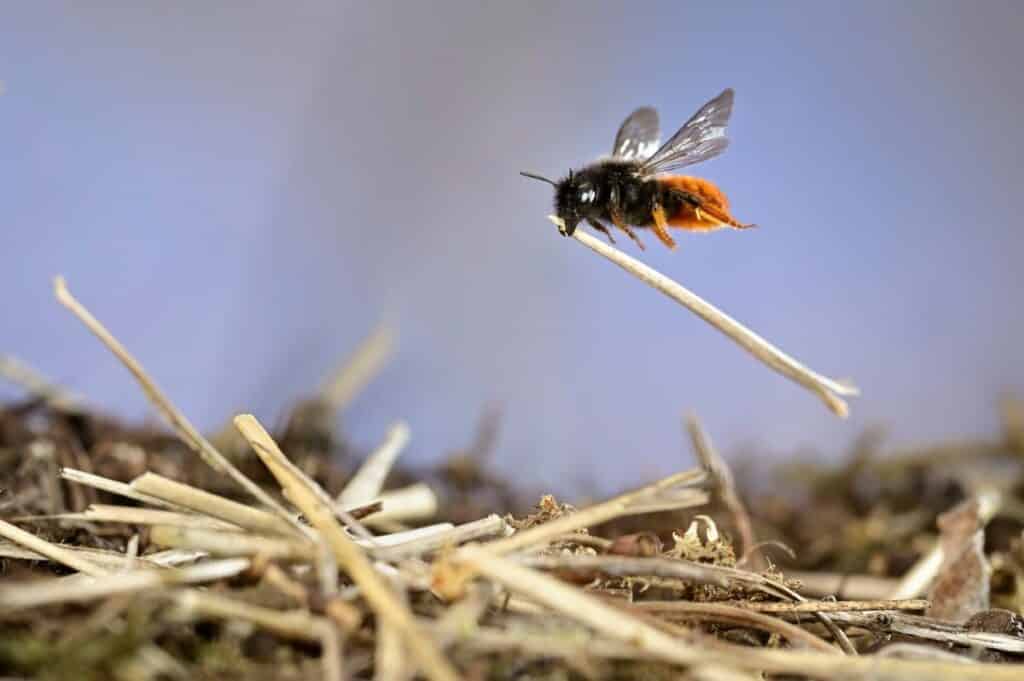
“Nest building” by Solvin Zankl (Germany). Runner-up, Other Animals.
“The two-colored mason-bee (Osmia bicolor) is a solitary bee species that nests in empty snail shells. After mating, the female bees search for suitable empty shells, which they then provision with masticated pollen and nectar. After laying eggs on the provision balls, the bees seal the shells and camouflage them with plant material. This bee is gathering dry twigs to cover her nest – ‘the more, the better', she seems to think, flying back and forth to accumulate an impressive pile.”
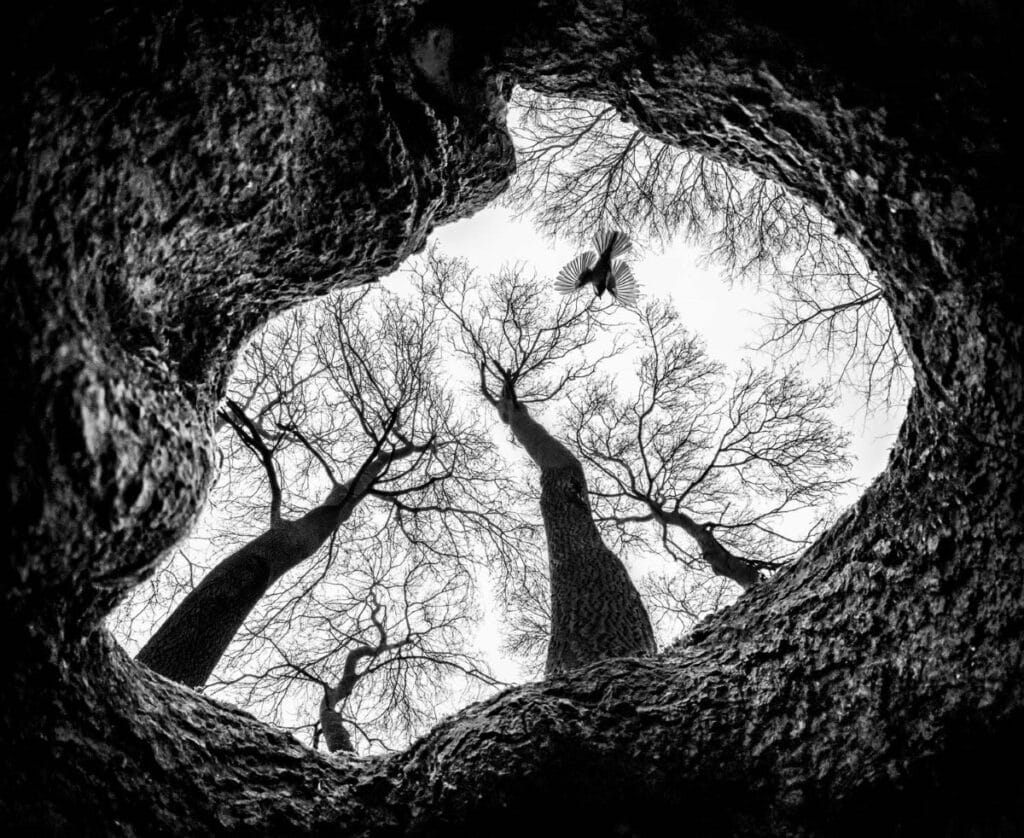
“Bird in forest” by Csaba Daróczi (Hungary). Winner, Birds.
“In the winter of 2022-23, I regularly visited a nearby forest to take photographs. Almost every week, I chose a new topic that I perfected over the course of several days. That is how I found this hollowed-out stump surrounded by tall trees. The opening is approximately half a meter in diameter. I put my GoPro camera inside, and the results were amazing. After a few days, I realized that the composition was missing something—an animal. I placed sunflower seeds in the hole and, soon enough, the first birds appeared, including this great tit (Parus major).”
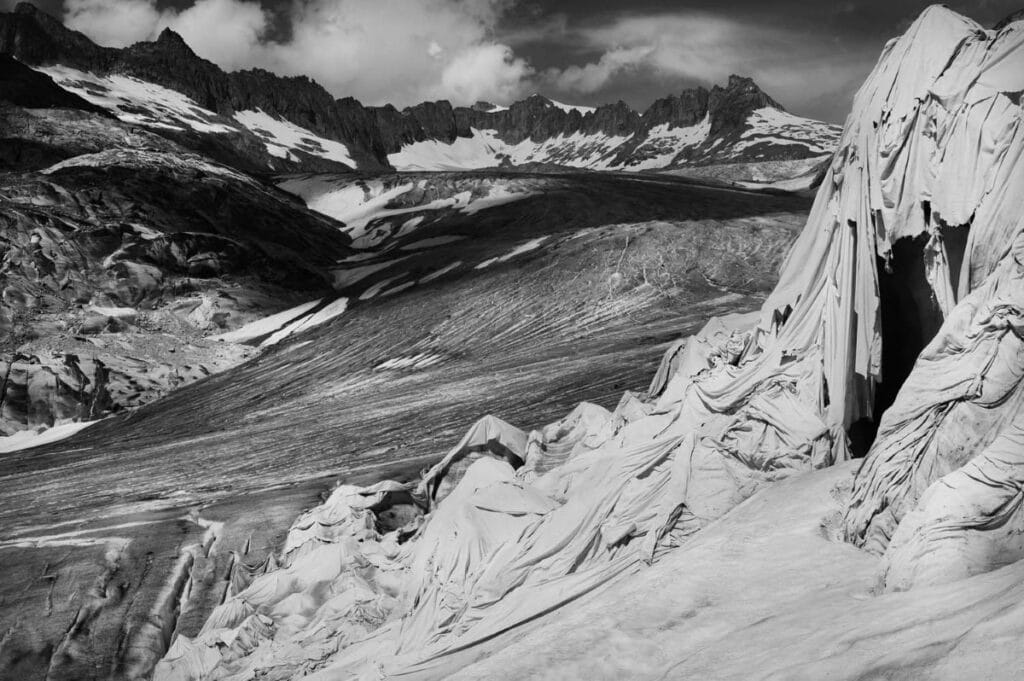
“Wrapped up” by Marella (France). Runner-up, Man and Nature.
“Every summer, a small part of the Rhône Glacier in the Swiss Alps is covered with white fleece blankets to protect the ice from melting even further and to preserve the blue ice grotto—one of the region’s largest tourist attractions. This image is part of the long-term project Evig, which explores the glistening, eternal, yet also fragile beauty of glaciers using digital black and white photography and cyanotype printing.”
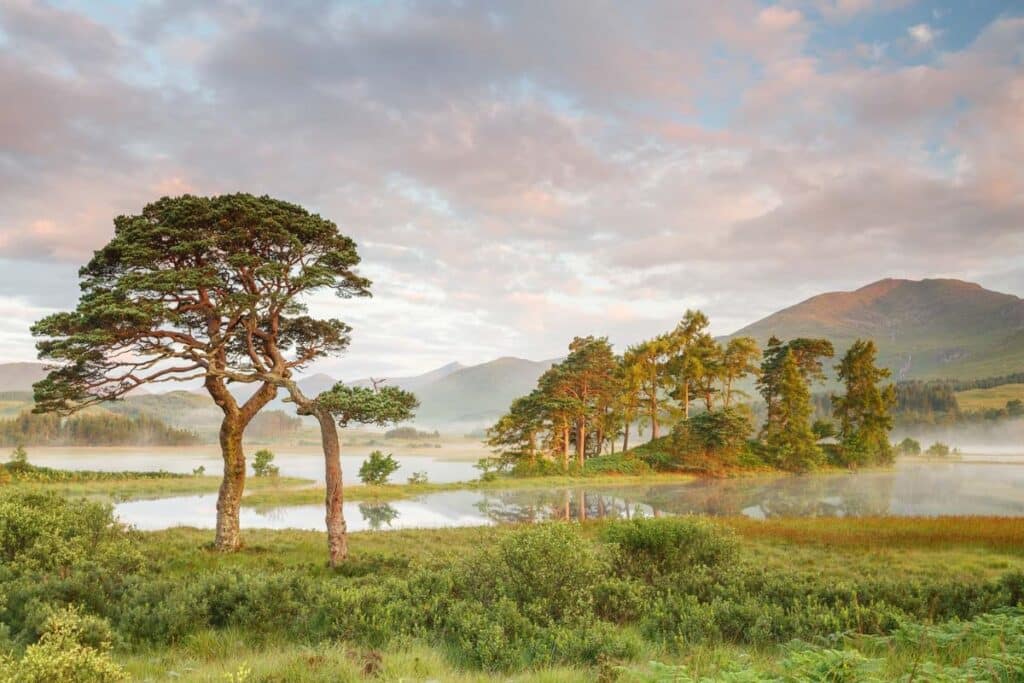
“Glencoe Highlands” by Dario Fernando Marelli (Italy). Highly commended, Landscapes.
“The spectacular valley of Glencoe and its eponymous village lie in the north-west Scottish Highlands. Glencoe played a tragic role in the history of the country in the 17th century; a feud between two opposing clans ended in a bloody massacre. Looking at today's idyllic landscape with centuries-old pine trees, it is hard to imagine that this was once the site of a terrible tragedy.”
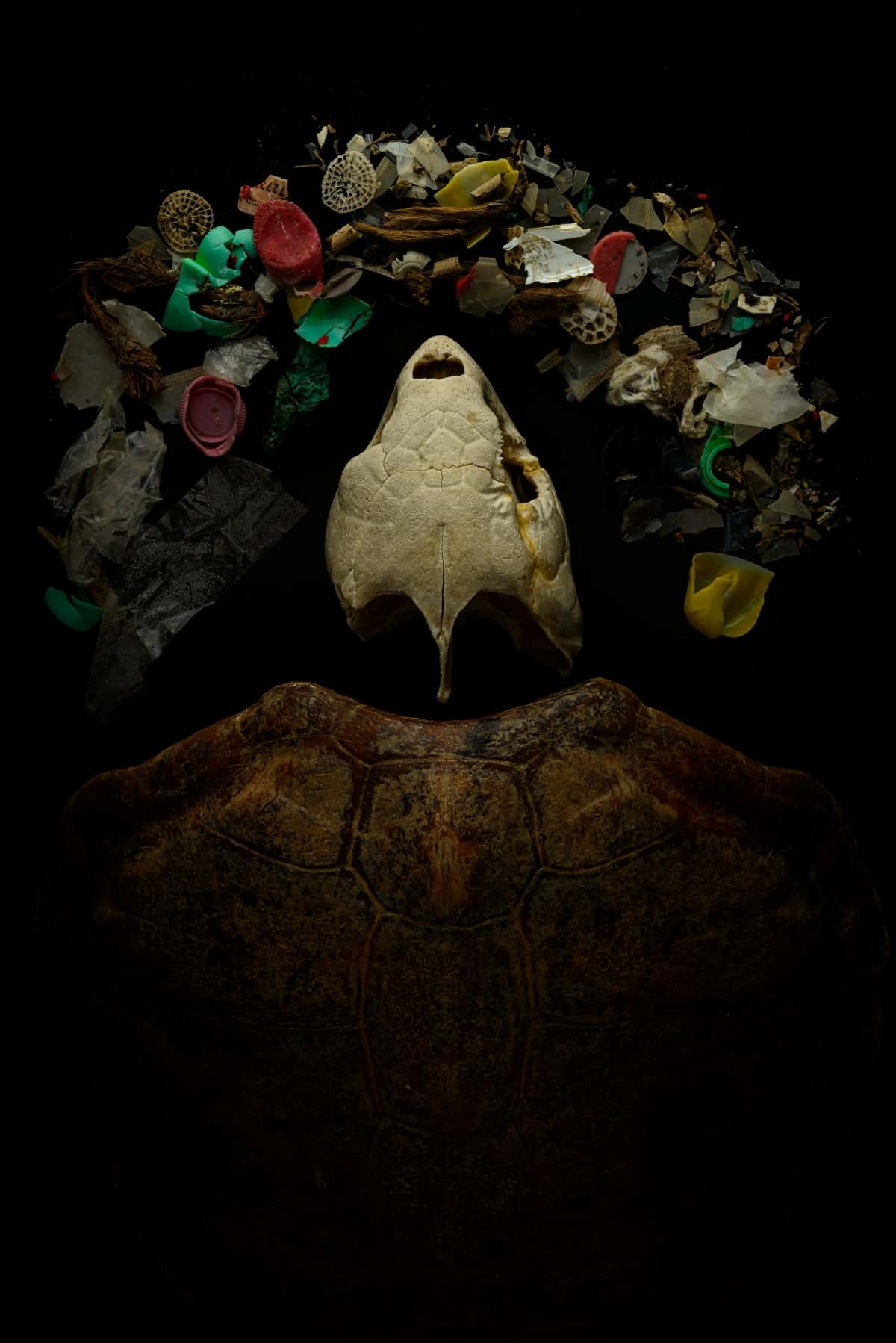
“Lost at sea” by Angel Fitor (Spain). Winner, Man and Nature.
“Loggerhead sea turtles (Caretta caretta) spend their lives unhurriedly roaming the high seas – the largest habitat on Earth – in search of edible morsels drifting in the water currents. As omnivores, the sea turtles feed on a wide variety of items, including jellyfish, salps, bits of seaweed and carrion. Because of their broad dietary interests, the animals are inevitably attracted by the brightly colored, eye-catching pieces of plastic drifting around in the world’s oceans. Many loggerhead turtles perish in agony due to intestinal blockage, just one of the many health concerns of ingested plastic.”
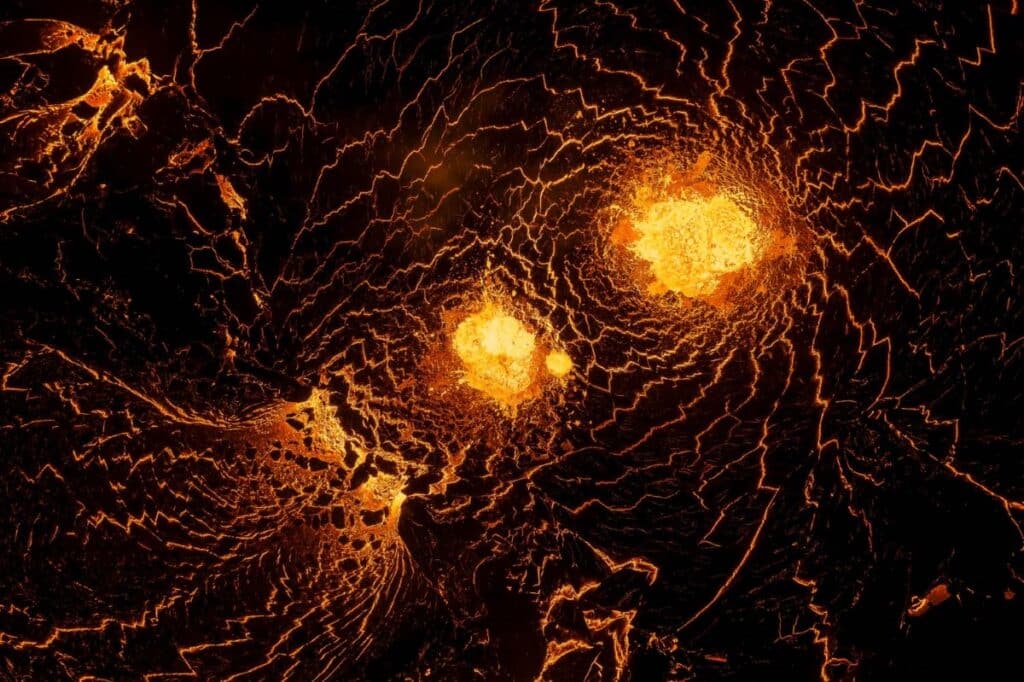
“Volcanic swirls” by Joel Delmas (France). Winner, Landscapes.
“This photograph was taken on Reykjanes Peninsula in Iceland during the Geldingadalur eruption in 2021. I was there leading a photo workshop and the participants were thrilled to be able to photograph a volcanic eruption. The spiralling structures in the image arose as lava pushed out of a crack in an old lava field far from the main crater. The greatest challenges were to not overexpose the centres of the swirls and to prevent the drone from overheating and crashing on the hot lava. Despite being very careful, several small plastic components melted while the drone moved in close enough to get this risky shot.”
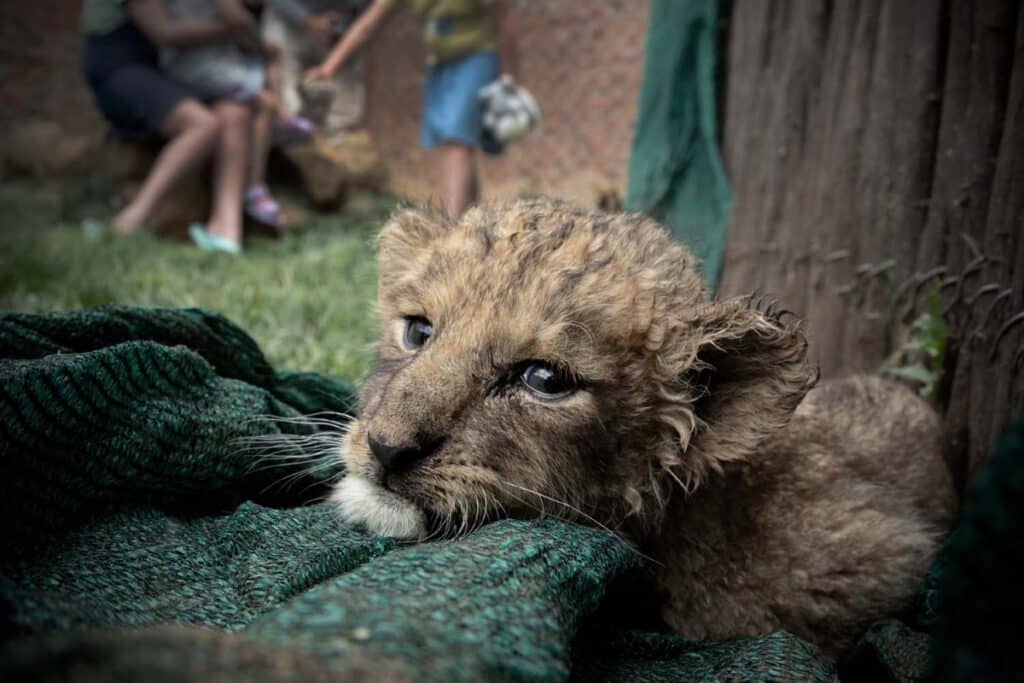
“Start of the cycle” by Aaron Gekoski (United Kingdom). Highly commended, Man and Nature.
“In South Africa, there are more than three times as many lions in captivity as in the wild. Every stage of the life cycle of a captive lion is fraught with suffering. Cubs are taken away from their mothers shortly after birth. This brings the female back into oestrus and increases the number of times per year that she can breed. Lion cubs are used as props for tourists who pay for the photo opportunity. Once cubs are too old to be handled in this way, they are often sold to ‘walking with lions’ operators. In the next life phase, lions are brought to hunting facilities to be shot by trophy hunters paying a great deal of money to bag a lion in a small enclosure. Lion skeletons are then exported to Asia where the teeth and claws are fashioned into jewelery and the bones are used as substitutes for making tiger bone wine. It is estimated that a lion born in captivity is worth up to $150,000 over the course of its lifetime.”

“Inside a tree den” by Jan Piecha (Germany). Highly commended, Mammals.
“I have been photographing raccoons (Procyon lotor) for several years and have had the opportunity to accompany various individuals with my camera. This female was raising her offspring in a large tree den and was not bothered by my presence. During the day, she would lazily let her head hang out of the burrow. In the evening, she would climb down the tree trunk with me standing right there. With a self-made, extra-high tripod, I was able to observe and photograph special moments in her family life.”
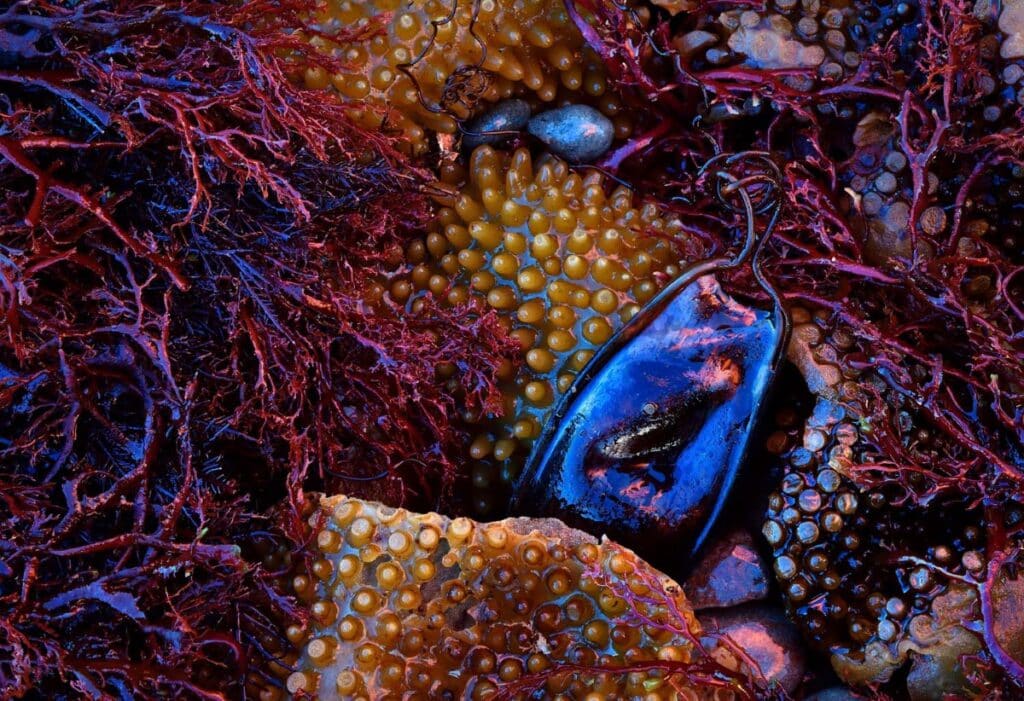
“Treasures of the sea” by César Llaneza Rodríguez (Spain). Highly commended, Plants and Fungi.
“This photograph was taken as part of my project On the sea shore. It shows diverse seaweeds washed up together on the shore by waves. At the center of the image, there is a shark's egg – most likely from a small-spotted catshark (Scyliorhinus canicula). For this type of motif, I pay special attention to focus placement to ensure a balanced composition. To enhance the color contrast, I added side lighting using an LED panel with warm colors.”
German Society for Nature Photographers (GDT): Website | Facebook | Instagram
My Modern Met granted permission to feature photos by GDT.
Related Articles:
Soaring Winners of the 2022 Bird Photographer of the Year Competition
Germany’s Nature Society Crowns the 2022 Nature Photographer of the Year
Marine Biologist’s Photo of a Golden Horseshoe Crab Wins Wildlife Photography Awards
Photographer Wins Prize for Heartbreaking Story About the Plight of Endangered Forest Elephants











































































